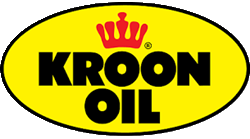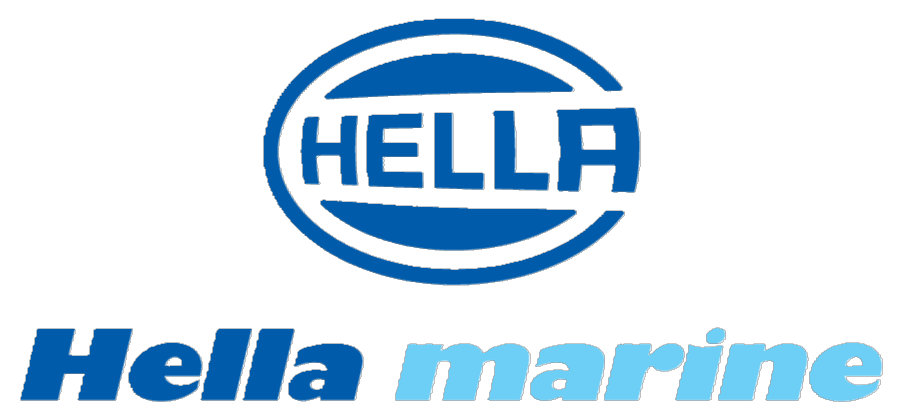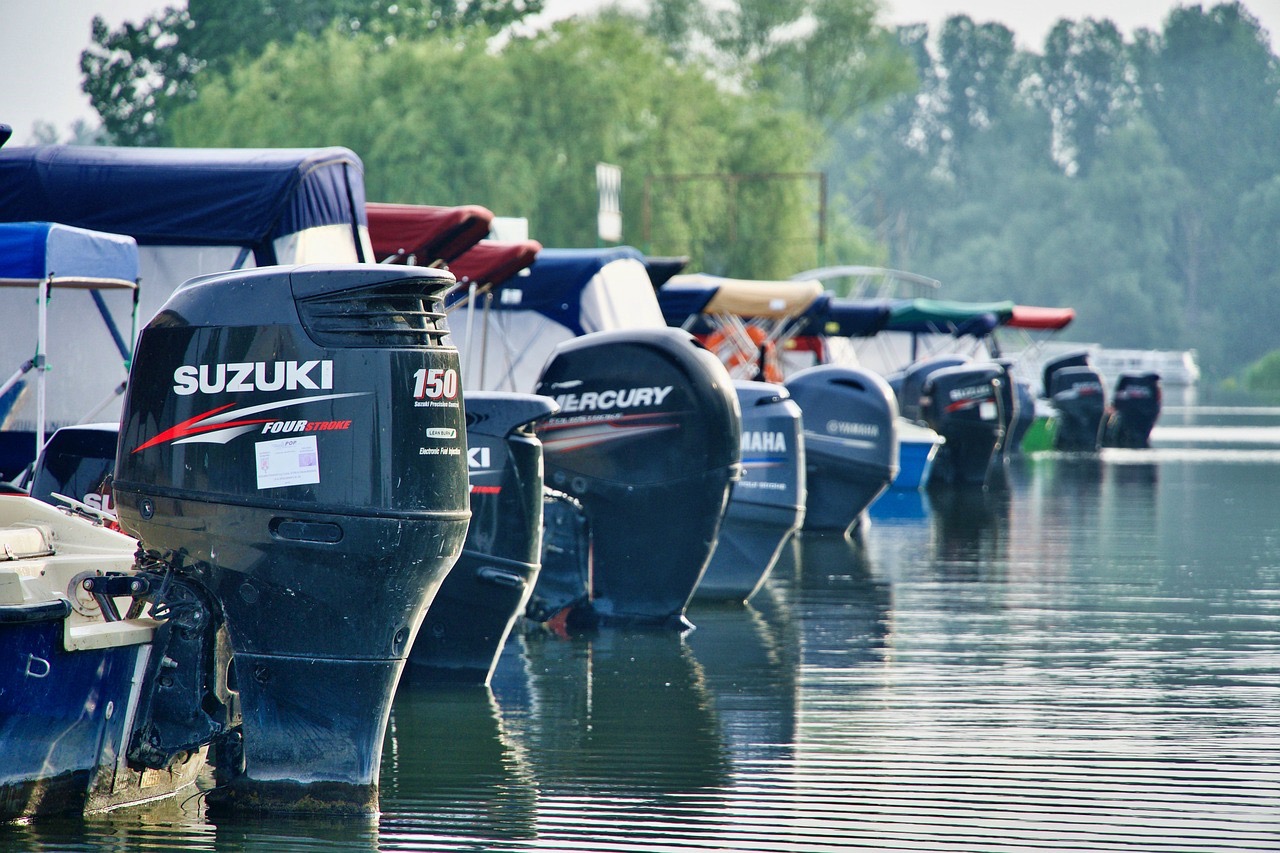
Perhaps you’ve experienced it before: you’re enjoying a nice boat trip when you notice the engine suddenly sounds different, and you see no water jet coming from the cooling water outlet. The temperature is rising, and the problem is clear: your outboard motor is not cooling.
Don’t panic, this is a common occurrence. With a bit of DIY skill, you can track down the cause and fix the problem yourself. To help you, we’ll explain all about the possible causes and solutions for an outboard motor that’s not cooling.
Why isn’t my outboard motor cooling?
If the engine stops circulating cooling water, the heat gets trapped in the engine block. Whether you’re sailing with a small outboard or have a larger diesel engine on board, it’s a problem in both cases. Especially on warmer days of the year or during longer trips.
Without cooling, damage can occur to the pistons, cylinder walls, or even the complete drive. These are the first signs of a disturbance in the cooling system:
- A weak or no stream of cooling water comes out of the exhaust.
- The engine temperature rises, and you can hear the engine having to work ‘harder’.
- You receive a warning signal or the engine will suddenly cut out.
- In modern engines, a fault in electronic sensors can also disrupt the cooling system or cause an error message.
The fault is usually located in one of these three places: at the water supply (e.g. a blocked intake or dirt in the filter), within the flow itself (e.g. due to a worn impeller), or at the end of the route (e.g. a blocked exhaust or faulty thermostat). We will go through these parts step-by-step shortly, so you know what to do if your engine suddenly overheats.
This is how your cooling system should work
The cooling system of an outboard engine isn’t complicated, especially with models featuring a wet exhaust. Its operation involves three steps:
- Drawing in water
The engine draws in cooling water through a water intake, usually in or just above the leg. This opening can easily get clogged by weed, sand or dirt – especially if you’re boating in shallow or overgrown water. - Pumping water around with the impeller
The impeller, a rubber paddle wheel in the water pump, ensures the cooling water is pumped through the engine. The impeller wears down with use and needs to be replaced regularly to prevent problems. - Discharging heat via the exhaust
The heated cooling water flows out via the outlet, thus dissipating the heat. On most engines, you’ll see this as a jet of water just above the water’s surface.
Your outboard motor therefore stays nicely at temperature without any problems. The thermostat plays an important role in this: it only opens when the engine is at temperature. If it doesn’t work properly, the flow stops, even if the impeller is still fine. If something goes wrong in this process, due to a blocked intake, air bubbles in the hoses, a worn impeller or a stuck thermostat, the temperature rises quickly.
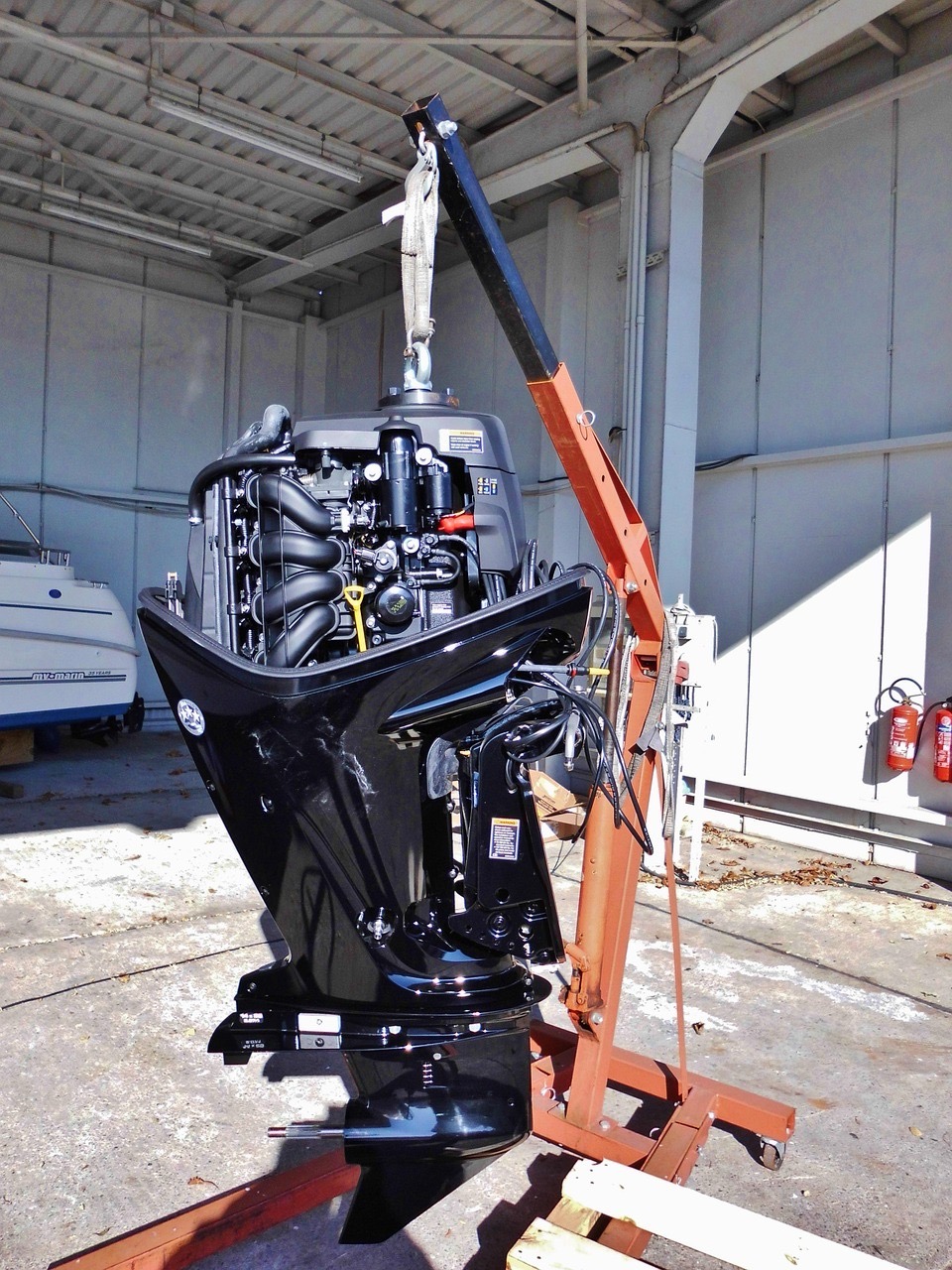
Possible causes of cooling system blockage
We’ve listed five common causes of a blocked cooling system. In many cases, you can fix it yourself.
Dirt in the impeller: replace the impeller
The impeller is the heart of the cooling system. This rubbery little paddle wheel is located in the water pump, just above the stern. If debris such as sand, silt, plastic, or water plants get stuck in it, the paddles can become damaged or deformed. Sometimes, pieces even break off and then block the pipes.
A worn or damaged impeller needs replacing. You can quite easily do this yourself (see this explanation: replacing the impeller). Pay attention to the direction of rotation of the blades, which must match the direction of rotation of the engine. We’ve recently started stocking complete Recmar maintenance kits at AB Marine Service, specifically for outboard motors. These also contain a new impeller, along with other parts for routine maintenance.
Salt crystals and algae: flush the system
If you regularly navigate in saltwater, there’s a higher chance of salt crystal deposits forming in your cooling system. This is particularly true if you don’t regularly flush the engine with fresh water after use in saltwater. The salt in the pipes will crystallise and eventually block the flow. Lime scale, algae, and other organic matter can also build up, especially during warmer months.
Therefore, flush your engine regularly, not just when winterising, but also in between. Many engines have a special flushing connection for a flushing kit or garden hose. This will prevent pipe blockages and obstructions.
A faulty thermostat: check the thermostat
The thermostat controls when the coolant flows through the engine. It only opens at a certain temperature (usually between 50 and 60 degrees Celsius). If it stays shut, it blocks the water flow and the engine can overheat, even if the impeller is still working correctly.
You can test the thermostat yourself by removing it from the engine and placing it in a bowl of hot water. If it doesn’t open? Then it’s time for a replacement.
Obstruction at the inlet: ensure water flows into the engine
The intake, often at the bottom or just behind the stern tube, can become blocked by weed, plastic, sand, or small shells. This happens quickly, especially when boating in shallow or still water.
You can unbolt the outdrive to inspect the intake, but be aware: you’ll usually need to disconnect the shift cable before you can remove the outdrive. Also, thoroughly check the grille and passage for dirt or damage.
Worn hoses and gaskets: maintain outboard motor
Is your outboard motor a bit older? Then it could also be a matter of wear and tear. Hoses can develop cracks or become porous after a long time. Rubber seals around the thermostat and water pump can also start to leak.
You’ll often notice this through a weaker cooling water jet or moisture around hose connections. So, if in doubt, it’s wise to thoroughly check seals and pipes, and not just look at the moving parts. Regularly replacing gaskets and pipes prevents many problems.
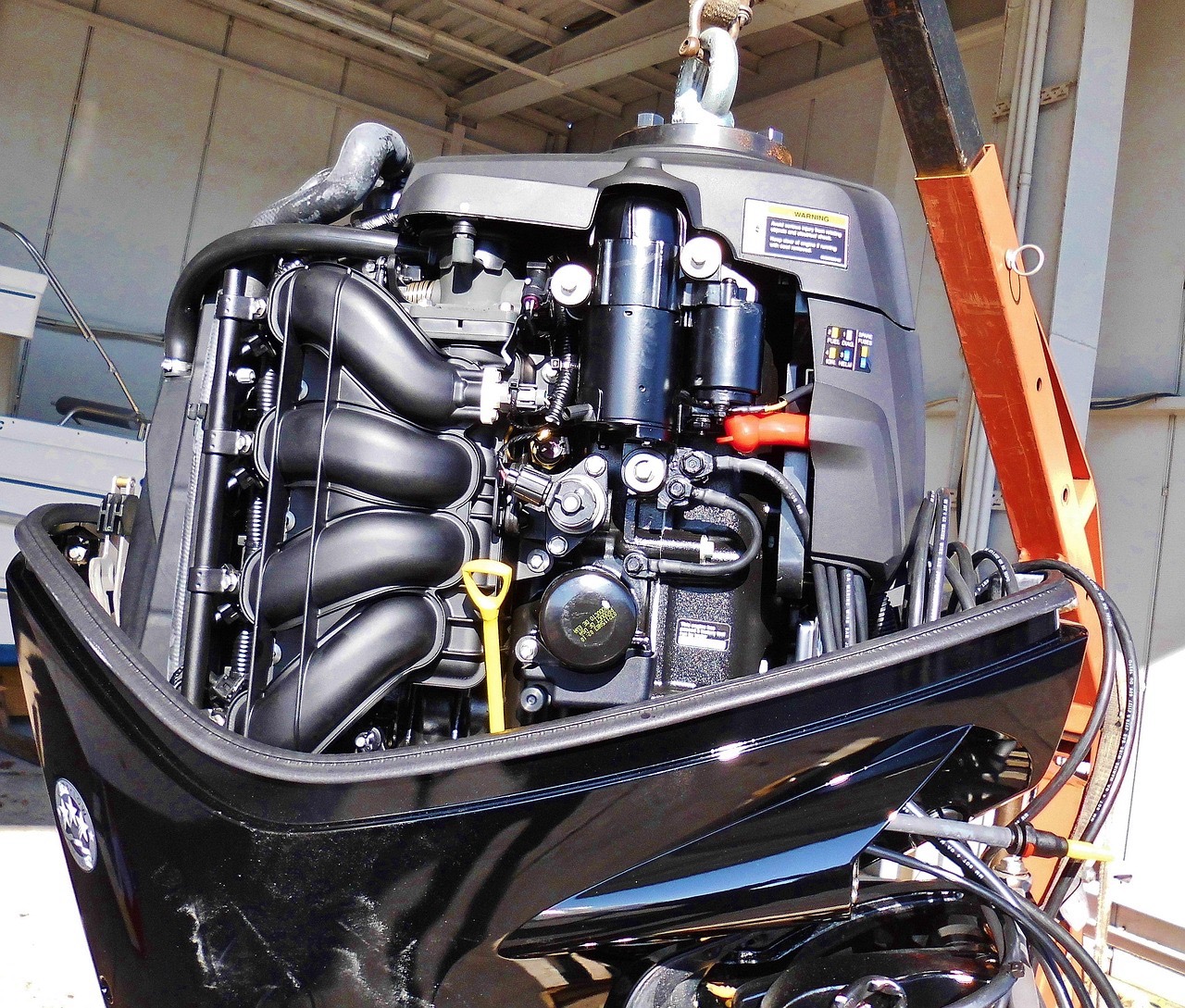
What can you do yourself with cooling problems?
Time to take action. If you’re a DIY enthusiast, the first step is to trace the problem based on a thorough inspection. After that, it might be time for maintenance or replacing key parts to keep the engine running smoothly.
Start with a thorough inspection
First, Check if coolant is coming out of the engine. Is the flow weak or absent? Then something is clearly wrong. Then go through these points:
- Check that the water intake is clear. This is usually located in or just above the stern. Remove any dirt or overgrowth if necessary.
- Open the bonnet and check that the hoses, connections, and impeller housing are still intact.
- Check that the water outlet is not blocked. On many engines, this is located just above the water level. You can carefully clear the hole with a piece of fishing line or a thin pin.
Ensure timely maintenance
Whether you clock up a lot of running hours or the boat has been laid up for a long time, ensure it is properly maintained.
- Flush your engine with fresh water after use in salt water.
- Regularly check the hoses, gaskets, and tailpiece for cracks, drying out, or leaks.
- Have your engine properly winterised at the end of the season. This will prevent deposits and corrosion while it is stored.
Replace broken parts
Sometimes it’s time to replace parts. This can also be done preventatively.
- Impeller: Replace it annually if you do a lot of sailing. If you don’t use it much, every two years is usually sufficient, but check it if in doubt. An impeller is included as standard in our Recmar maintenance kits.
- Hoses and seals: As these get older, they can leak or lose pressure. Timely replacement prevents damage.
- Thermostat: Check it by placing it in hot water. If it does not open at ± 55°C, then replace it.
Additional tips to prevent cooling problems/strong>
Finally, here are a few extra tips to prevent any damage.
- Always use parts that are resistant to salt and wear.
- Reposition the tailpiece exactly as it was during disassembly. Don’t forget to securely fasten the shift rod.
- Fit the impeller in the correct direction of rotation. The vanes should bend in the direction of rotation of the motor shaft.
Outboard not cooling? Get it sorted with AB Marine Service
An outboard motor that isn’t cooling properly is a nuisance, but usually easily fixable. Need new parts? At AB Marine Service, you’ll find everything you’re looking for: impellers, thermostats, hosesn, gaskets, and more, for example. Recently, you’ll also find a complete Recmar maintenance kits, specifically for outboards such as Yamaha. This allows you to replace the impeller, gaskets, and other wear-prone parts in one go. Can’t quite figure it out? Feel free to contact us for specific advice.


